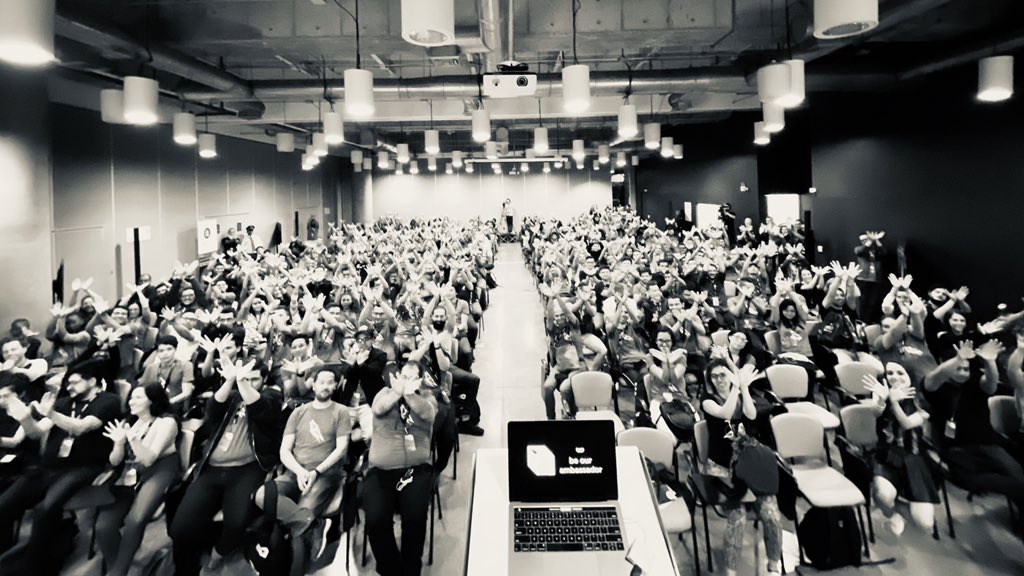Highlights of JSConf Colombia
October 18th and 19th was the sixth annual version of JSConf Colombia, the biggest Spanish-speaking JavaScript conference in the world. It was a massive success.
With roughly 400 attendees, 22 speakers, 15 organizers, 14 sponsors, and 4 MCs, we had 1 language in common: JavaScript.

JSConf Colombia is a conference built by the community, for the community. After 3 years of organizing the conference, I had the honor of co-directing the conference in this edition. Adrián Estrada, VP of Engineering at NodeSource, was also part of the organizing team.
The feedback from the attendees and speakers was very positive and encouraging. We, as organizers, work especially hard to create a unique, inclusive and authentic experience for all. We always want to show what Colombia has to offer and how a city such as Medellin can be transformed through technology and innovation. Three decades ago Medellin was the most violent city in the world. Today, it is considered “The Most Innovative City”, “The Silicon Valley of Latin America”, and the “Center of the Fourth Revolution”.
This incredible transformation was possible because of technology, communities, and a lot of hard work. Events like JSConf have a big impact on the region, and we are proud to be a part of this history.
Remarkable Talks:
The talks covered a wide range of topics, including robots, performance, Houdini, neural networks, time, art, music, machine learning, accessibility, testing, Kubernetes, and Node.js, among others.
The first day of the conference included:
-
Constanza Yáñez She did a fantastic and interactive talk about life, robots, and cats! She created a pet sitter robot, that helps her feed her cats. Then she donated it to the audience! Automation rocks!
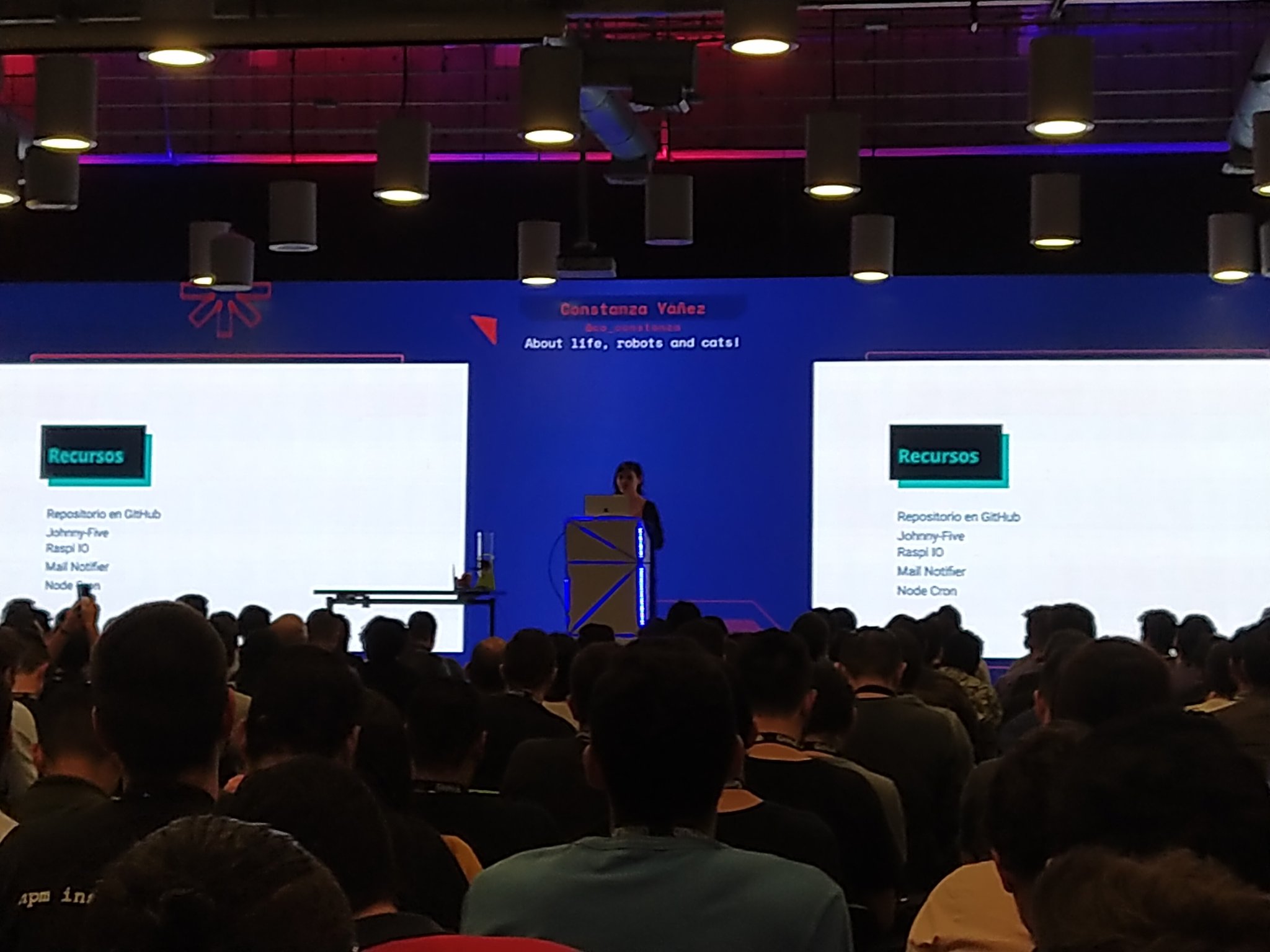
You can find the slides here.
-
Sergio Quintero talked about firewall from the client’s side controlled by the host, and different security measures to take into account when protecting data from the client-side. He also mentions what tools and formats to use to improve data security.
-
Luis Alejandro Vega in his talk, “Mascot Driven Development: building a high performing team through application ownership & identity”, Luis explains his experience of changing roles from a senior software engineer to a managerial position, the path for building a team to own and revamp unpopular applications and expand the portfolio with new applications.
-
Mayra Alejandra Rodriguez Maldonado explains how to create your custom store with RxJS in Angular. She explains best practices and if you want a customized store with RxJS, don’t miss this talk!
-
Irina Shestak “From Electron, to WASM, to Rust (aaand back to Electron”. In this session, Irina talks about converting a part of a codebase from JavaScript to Rust, bringing it to Electron, adding WASM to an existing React app, and deploying this whole lot to production. Also, how to use Rust to improve performance without losing data integrity.
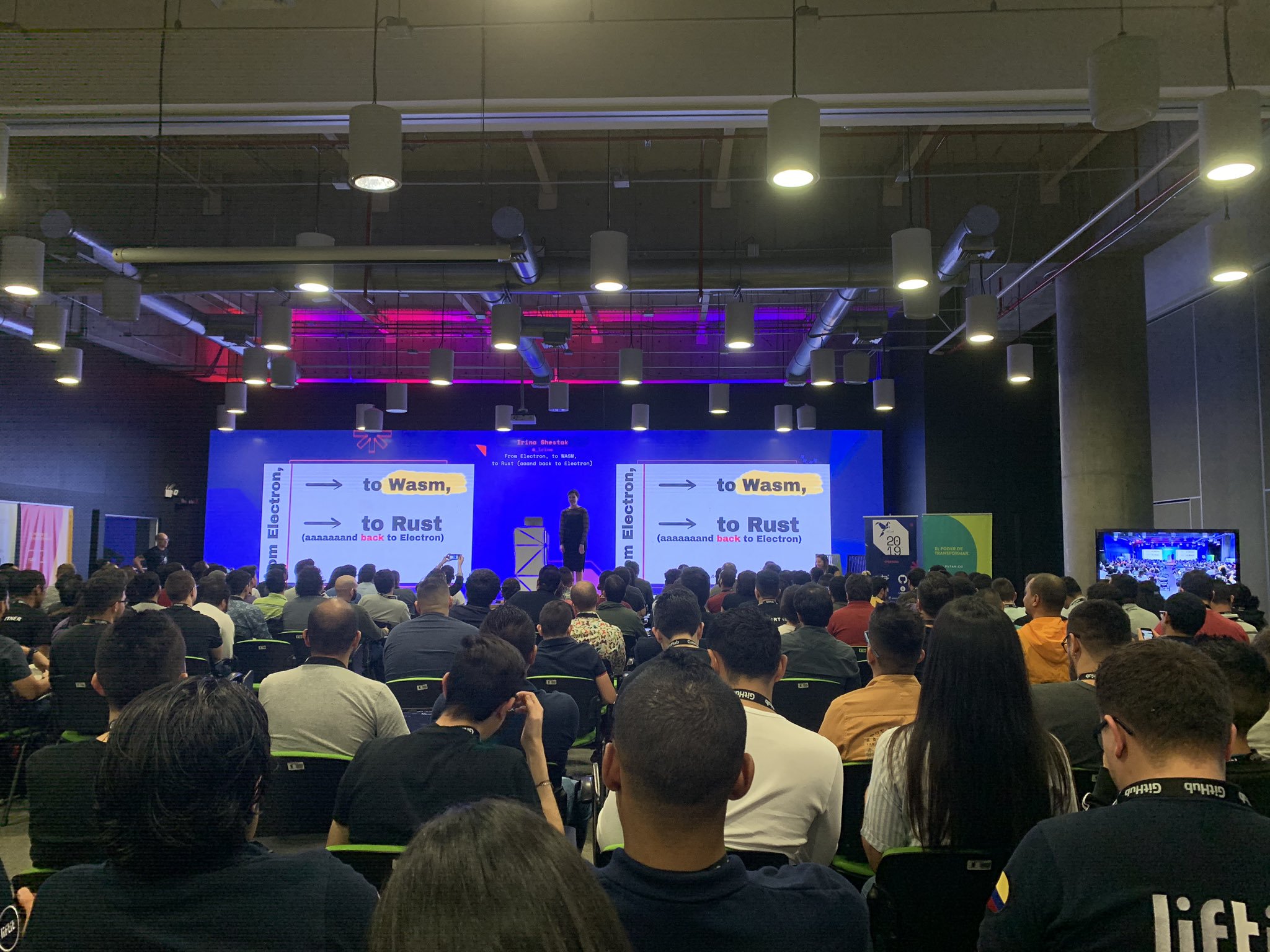
You can find the slides here
-
Melina Mejía Bedoya “Transforming the web into a better place for everyone.” In this talk, Melina talks about web accessibility, the 4 categories of Accessibility, and the importance of making all web pages accessible with examples!
You can find the slides here
-
Santiago Zapata In his talk “Procedural Generation using JavaScript”, Santiago describes a process to design and implement procedural generators using a top-down approach resulting in a stack of generators of an increasingly higher level of detail. He uses little cool monsters in his examples (not pokémon).
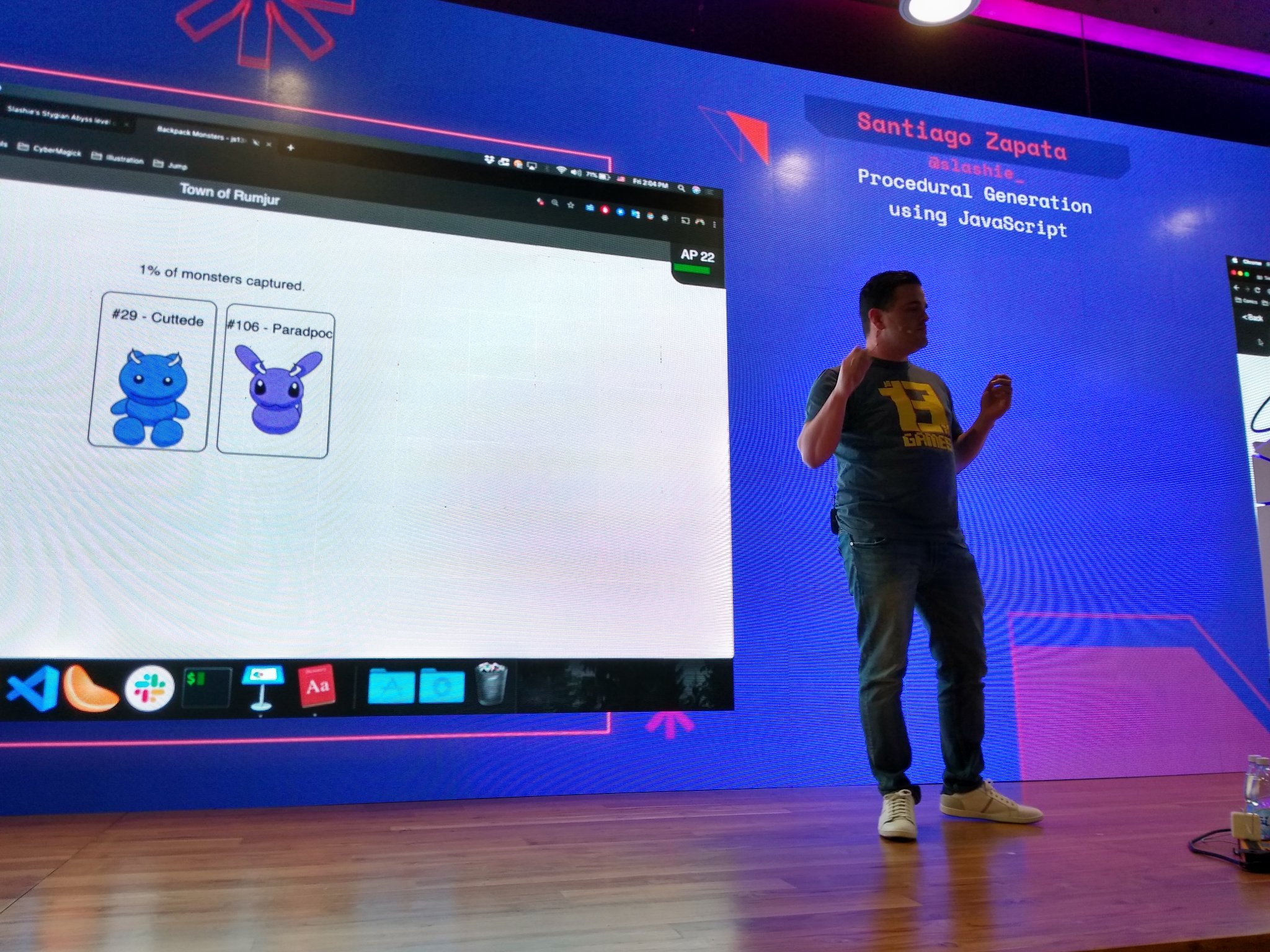
-
Anton McConville Personality hacking: using Node, WebAudio and Houdini to visualize psychology of song lyrics. In this session Anton use JavaScript on the server and in the browser to visualize personality changes of musical artists over time, through their lyrics. If you like music and JS, don’t miss this talk!
You can find the slides here
-
Vanessa Aristizabal She uses the most beautiful illustrations to tell a story, the story of JavaScript, CiSaS and cHaTeMeL.
-
Lucas Aragno talks about neural networks in JavaScript. He explains useful concepts and introduction to get started with machine learning and how we can use them on our day to day stack.
You can find the slides here
-
Jennifer Wong In her fantastic talk, “Time Is But an Illusion… in JavaScript” Jennifer explains the history of time, problems working with different time zones like formatting, internationalization, rules, leap years, Moment.js and some solutions to work more effectively with time in JavaScript.
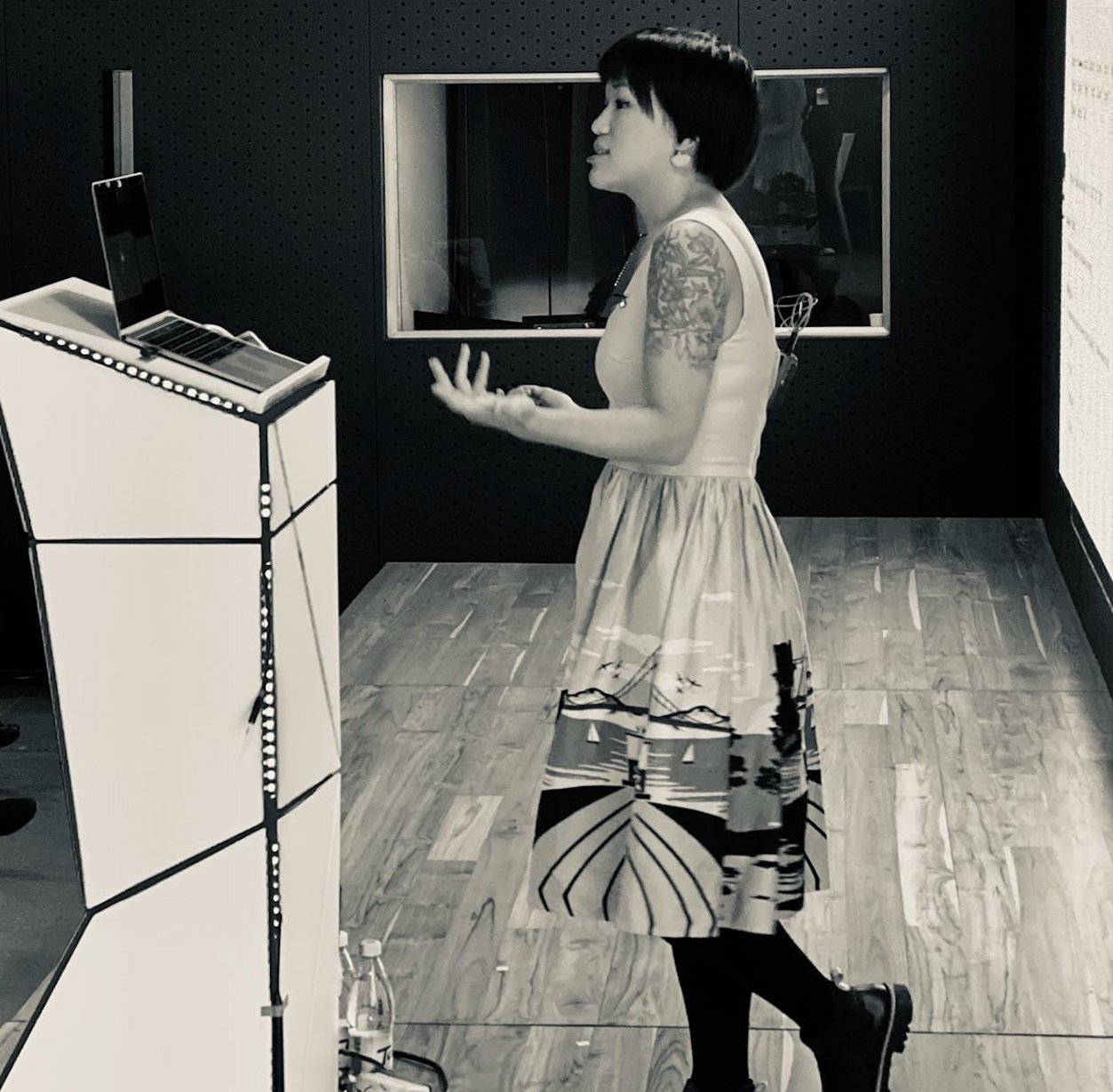
You can find the slides here
The second day of the conference included:
-
Kate Beard In her talk, “Learn How to Play the Theremin* Today, Guaranteed! (*no theremin required)”, Kate show us how to turn any computer into a theremin using a browser, your webcam, and some machine learning magic.
-
Alejandro Oviedo Alejandro talks about how data helps us understand a vast variety of topics from physics to geography and astronomy and how he built a library that collects data from the internet using serverless and Node.js.
You can find the slides here
-
Maris Botero Gonzalez In this beautiful talk “the time machine with machine learning and javascript”, Maris explores a city project called the time machine, where she collected old photos of Medellin, documents to make machine learning algorithms using javascript and tensorflow.js
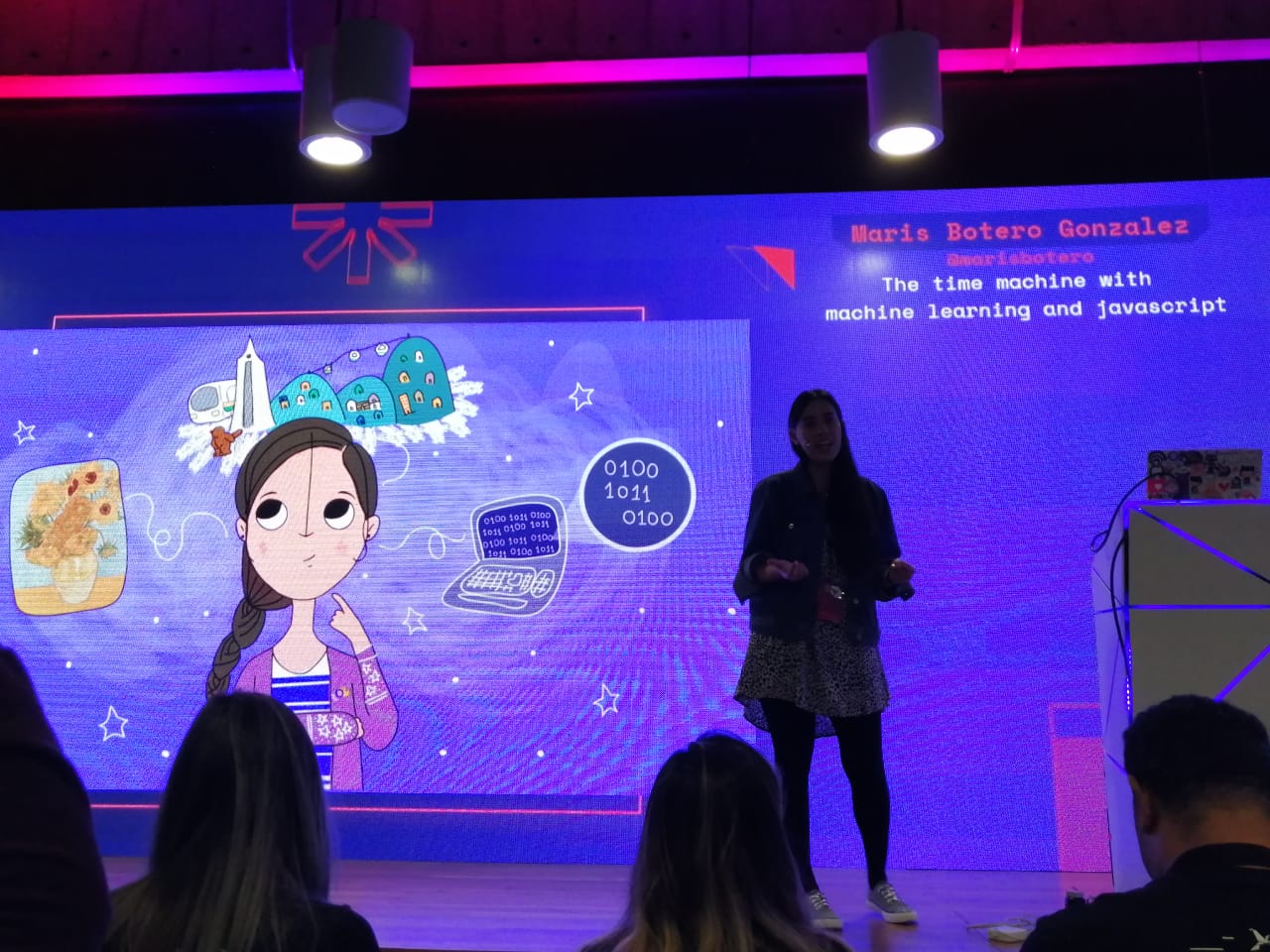
You can find the slides here
-
Adrián Bolonio In his session “Testing Web Accessibility” Adrian talks about how often we put a lot of work on the design, makingw it beautiful and usable, but we don’t think about the user experience for people with disabilities. If you want to make your pages more accessible for everyone to check out this talk!
You can find the slides here
-
Jerome Hardaway in his talk “Writing Newbie-Friendly Javascript: Building a Codebase For The You From Five Years Ago: Jerome speaks at length on steps to take that make codebases friendly as he reminisces through his own hardships on his journey to becoming a programmer and the things we forget and steps he and others can take to not make the process so difficult.
-
Daniel Estiven Rico Posada in his talk, Node.js in time of Kubernetes, Daniel talks about some of the techniques, practices, and technologies using Kubernetes, including monoliths to microservices, clean architecture, Infrastructure as code, secrets as a service, LocalStack and others.
-
Colin Ihrig in this very interesting talk, “Out of the Box Node.js Diagnostics” Colin explains how in the early years of Node.js, diagnostics and debugging were considerable pain points. Modern versions of Node have improved considerably in these areas. Features like async stack traces, heap snapshots, and CPU profiling no longer require third-party modules or modifications to application source code. This talk explores the various diagnostic features that have recently been built into Node.
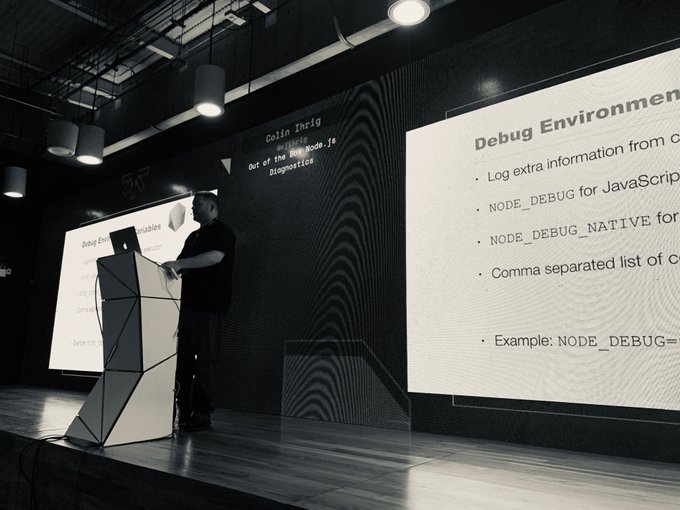
-
Jessica Lord in her talk, “Building up the Electron Project” Jessica explains how Electron went from atom-shell, a dependency of the text editor Atom with no plans of its own, to the widely adopted desktop framework running many of your favorite applications
-
Luis Villalobos Development of modern user interfaces using an "old" computational mathematical model. In his talk, Luis explains how difficult can be creating user interfaces, especially when your flow is not designed or specified. There is a more structured and optimal way to develop user interface to show the views or components that we want users to see regardless of data or other factors using a computational mathematical model, finite state machines or statecharts.
-
Bryan Hughes in his talk, “Finding your inner artist” Bryan explains the importance of art; which is the culmination of everything good about our species. Creating art is different than building a product. And it’s connection when writing code.
-
Eva Ferreira in her amazing and funny talk “Oda a la década++” Eva goes through a journey of 10 years of JavaScript, it’s tricks, improvements, and more!

You can find the slides here
What Made JSConf Colombia Special:
Not only the talks presented were remarkable, but JSConf CO had several things that made it special and welcoming to everyone.
- The organization: thank you to all the organizers for their amazing job! The attention to detail was fantastic, the conference ran smoothly and efficiently and the overall experience for all the attendees was very positive. This conference was a success because of all of us!

- The Scholarship Program: there were around 50 recipients of scholarships, which provide individuals from underrepresented groups with support to attend the conference with everything included (from flights/transportation to hotel and food).
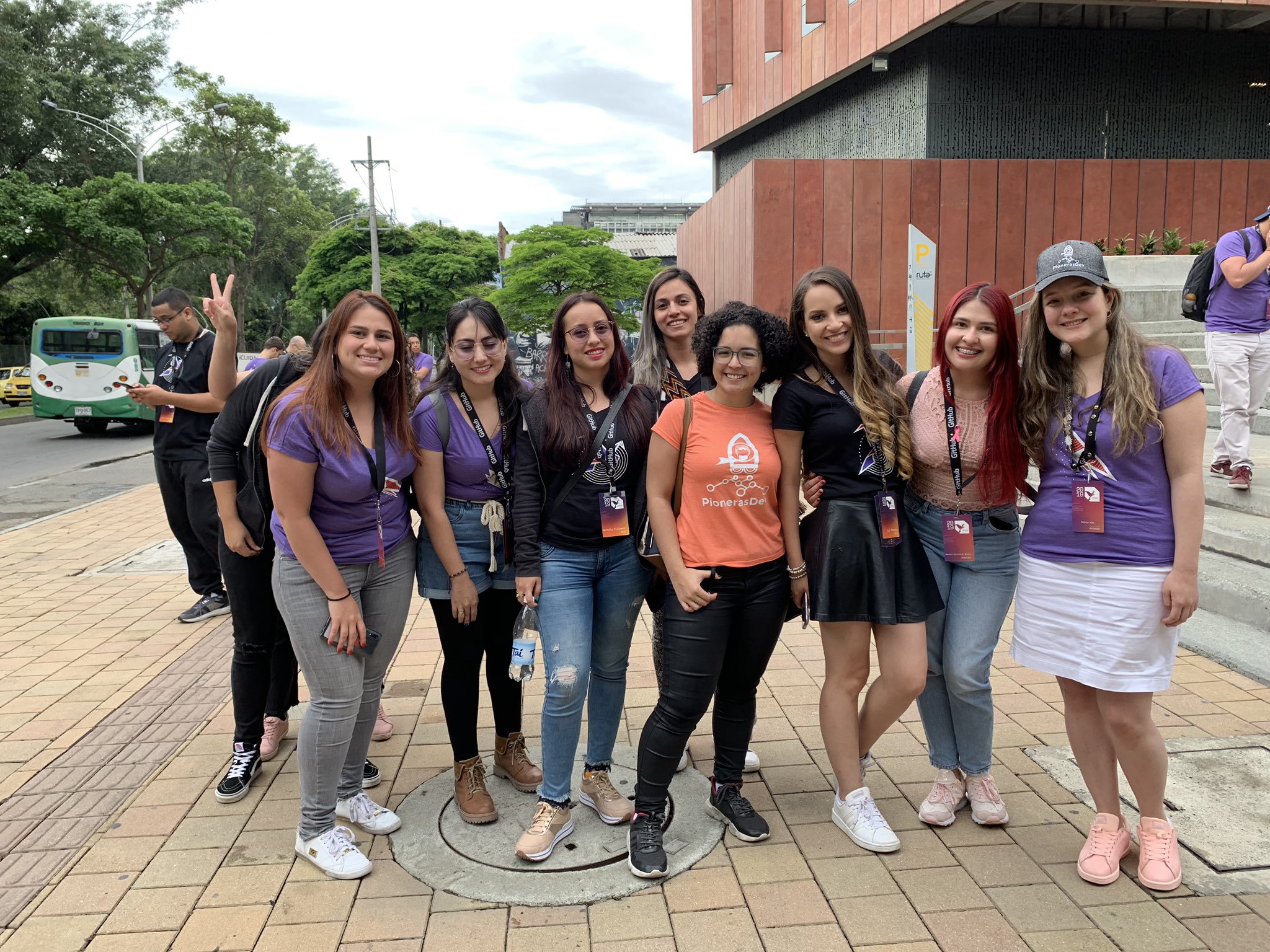
- Diversity: it was a big and diverse conference with people from all over the world with different backgrounds.

Women in the conference - Support to other events and communities:
Save the date! Big things are happening in Colombia 😱🤩@boyaconf @NodeConfCo @cssconfco @scaleconfco pic.twitter.com/2COXAdEGf1
— Liz Parody (@lizparody23) October 19, 2019
- The first of many things:
- It was the first time JSConf Colombia had mentors to help new speakers to prepare with their talks.
- If was the first time JSConf Colombia provided lunch to all the attendees! The food was delicious, with different varieties, and they had many healthy options!
- It was the first time we had a panel with experts on different topics!
- First time with more Latin American speakers.
- First time we had a huge screen!
A good place to learn, have fun and make new friends: thank you JSConf CO! The conference was a success!
